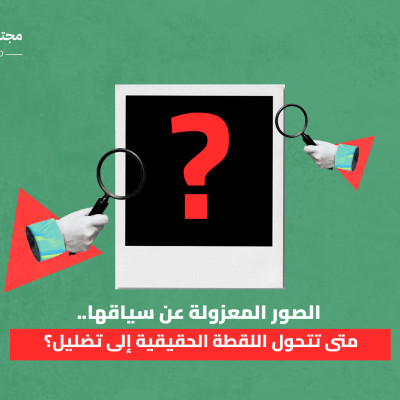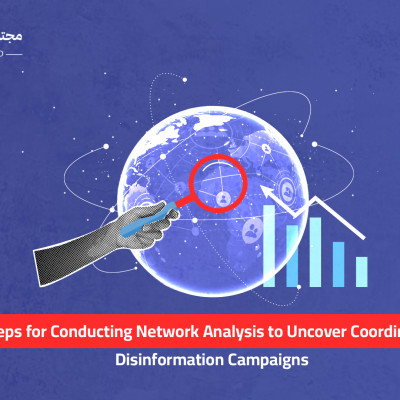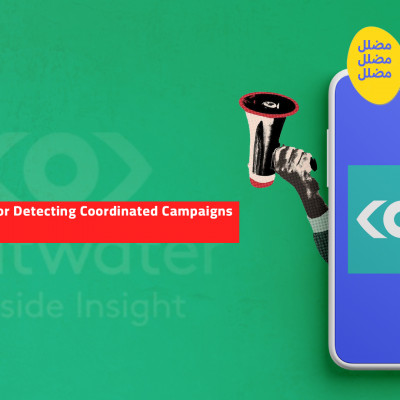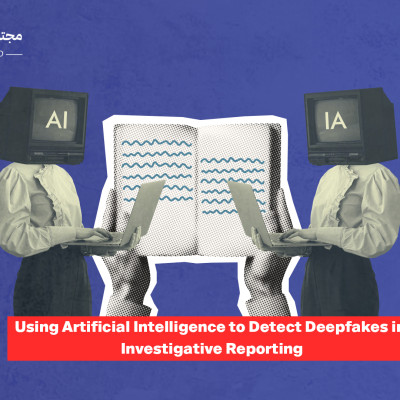Source Manipulation: When Real Sources Are Used to Distort Meaning
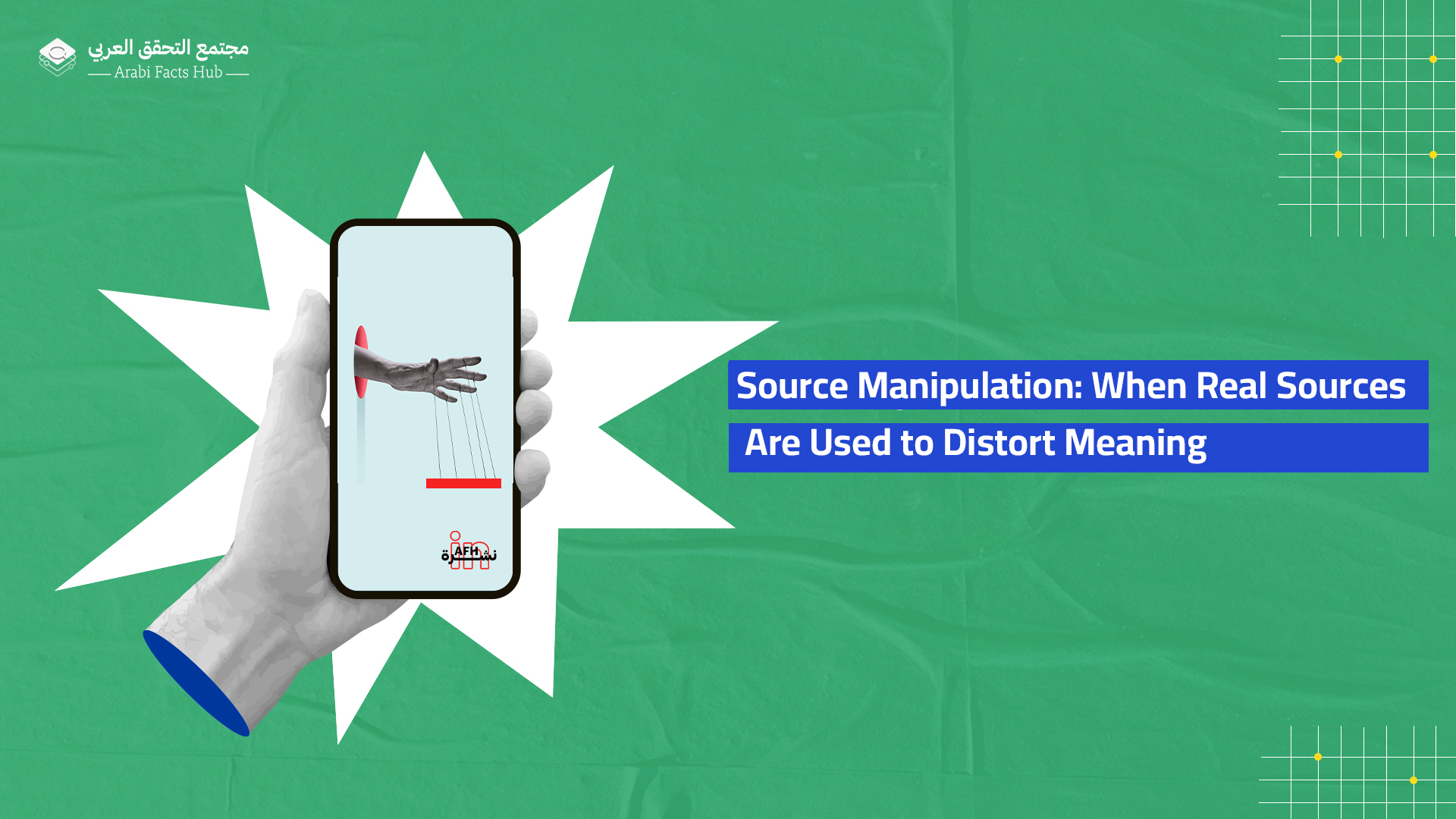
In an age of ubiquitous information, deceiving the public no longer relies solely on outright fabrication. More complex and subtle methods have emerged, which involve repurposing the truth itself within a false context. Among these methods, "source manipulation" stands out as one of the most dangerous forms of content distortion because it gives false claims a veneer of credibility. What you see or hear may not be fake in form or origin, but it can be deeply misleading in context and meaning.
This type of disinformation appears when authentic material—such as images, videos, or verified statements—is stripped from its original context and applied to a different event, time, or place. A common example is an old statement by an official being reshared as though it were new. While the quote itself is real and documented, its re-presentation in this way is a textbook case of "source manipulation."
What Is Source Manipulation?
Source manipulation involves using accurate, original material but presenting it in a misleading context by obscuring details of time, place, or objective. This form of disinformation differs from "complete fabrication" because it leverages real information, giving it a deceptive sense of credibility and making it more challenging to identify.
According to leading media disinformation scholar Claire Wardle, this concept encompasses two primary forms of misinformation.
Under this concept fall two main forms of disinformation, according to the framework developed by Claire Wardle, a leading scholar in media disinformation studies:
- Misleading Content: when accurate information is used in a way that hides or distorts its original meaning.
- False Context: when an authentic image, video, or statement is repurposed in a different temporal or spatial context to support a false narrative.
It is important to note that the term “source manipulation” is rarely used as an official classification by fact-checking organizations or major academic studies. Instead, it functions mainly as a descriptive label that highlights the mechanism underlying these types of manipulation—it simply explains how real sources are exploited to serve false narratives.
Academic and Methodological Roots
In 2017, Claire Wardle published a landmark report for fact-checkers at First Draft News, in which she identified seven main types of misinformation and disinformation.
In 2020, she released a more detailed report titled “7 Types of Misinformation and Disinformation,” where she explained these categories — including the ones discussed in this article: Misleading Content and False Context.
This framework has since been adopted by major fact-checking platforms at both international and regional (Arab) levels.
Related Advanced Concepts
As academic discussions evolved, more precise terms emerged to describe cases where genuine sources are used as weapons of attack.
One of the most notable among them is “Weaponized Context” — an extension of the concept of false context, but with an emphasis on malicious intent. In this framing, misinformation is not limited to placing content in the wrong context — the context is deliberately weaponized to target specific people, groups, or issues.
Under this concept, the genuine source becomes the weapon, while the fabricated context is the firing mechanism.
This type of information is not entirely fabricated, but is presented in a way that misleads the recipient or deceives them. It often relies on true facts but is used in a fragmented, selective, or ambiguous manner to alter the original meaning or push the audience toward a false conclusion.
How is it Carried Out?
1- Distortion or partial omission:
Used by presenting correct information - such as pictures, statistics, or quotes - but after deleting or distorting its original context, which changes its meaning or suggests a different message. For example, a reliable report might be quoted out of context, or a report's title could be changed to suggest contradictory content.
A common example: statements from international organizations such as the United Nations or the World Health Organization, which are taken out of context or reinterpreted in a misleading way.
Example: A Statement on “Disease X"
Claim: “The World Health Organization warns of a new pandemic called ‘Disease X’ that will be 20 times deadlier than COVID-19 and calls for a new global lockdown.”
Source truth: The statement is partially true, as the WHO Director-General, Tedros Adhanom Ghebreyesus, did in fact mention “Disease X” during the World Economic Forum in Davos.
Mechanism of disinformation: The statement was taken out of its original context. “Disease X” is a hypothetical term coined by the WHO in 2018 to denote a potential future pandemic caused by an unknown pathogen, not an existing illness. Tedros's comments emphasized preparedness rather than an immediate threat. Nevertheless, some media outlets sensationalized the statement, fostering a narrative of fear.
2- Misleading presentation:
Sometimes, information isn't false, but it's presented in a way that conveys a misleading message. This could be using a real graph without its full timeline, which creates an exaggerated impression. This technique is known as "cherry-picking" or a "truncated graph."
Example: The claim that “global warming has stopped,” based on a real graph showing relatively stable temperatures between 1995 and 2009. However, ignoring data from longer time periods concealed the overall warming trend. The fact-checking platform Skeptical Science debunked this claim in a scientific report titled “Has Global Warming Stopped?.”
3- Insinuation or ambiguity:
Sophisticated methods like sensational headlines or ambiguous quotes are used to push the reader towards an incorrect conclusion without stating it directly.
Example: The headline "COVID-19 Vaccine Causes Blood Clots" while the report discusses a very rare case among millions.
Another example: A sarcastic quote is presented as a serious statement, completely reversing its meaning.
This involves using authentic content (images, videos, or statements) in an inaccurate context in terms of time, place, or event. This re-contextualization causes the content to lose its original meaning and become misleading. Despite the material's authenticity in source and content, its repurposing in a different context—whether intentional or due to insufficient verification—renders it deceptive.
Examples:
- An image of the Beirut port explosion in 2020 published with the claim that it is from Gaza in 2024.
- A video from a demonstration in Yemen presented as being from Libya.
- An old statement re-promoted as new to support a current position.
Platforms that adopt this methodology:
This methodology is not exclusive to one institution, but has become the accredited practice for many reliable fact-checking platforms around the world.
Internationally:
- Agence France-Presse (AFP Fact Check) fact-checking service: routinely uses similar classifications in its reports.
- Reuters Fact Check: relies on the same principles to classify claims.
In the Arab world:
- Sahih Masr: uses a methodology that classifies claims into several forms, including "fake content" and "misleading content."
- Verify-sy (Ta’kkad): follows the same principles in its verification reports, according to the classification of "misinformation" and "out of context."
Common Techniques in Source Manipulation
Cropping statements: A sentence or part of a long speech by an official or expert is taken and cropped out of its context, so that the meaning appears different from what the speaker intended. The statement may appear grammatically correct, but it distorts the meaning due to the absence of the full context.
- Combining a real source with a false comment: In this case, a true image or video is used, but a misleading comment or description is added to it, leading the audience to a wrong understanding of what they see.
- Attributing the source to a different event: An image or video from a previous event is reused and presented as documentation of a new event, even though there is no relationship between the two events other than visual or emotional similarity.
- Distorted translation of the source: This happens when statements or reports are transferred from foreign languages, where the translation is distorted to serve a specific agenda, or important parts that completely change the intended meaning are deleted.
Why Are These Methods Effective in Deceiving the Public?
- Authentic Appearance: The material used is real and documented, which automatically gives it a degree of credibility in the eyes of the recipient.
- Pre-existing Bias: People are naturally inclined to believe what aligns with their prior convictions, making it easy to manipulate their emotions through content that appears to be "evidence" supporting their positions.
- Weak Verification Skills: Many internet users lack the tools or skills to verify the accuracy of information or contexts, making them vulnerable to re-sharing without scrutiny.
How To Verify Context?
To verify the accuracy of the context in which specific content is presented, it is recommended to follow these steps:
- Check the Date and Time of the Material: Verify the timing of a video, statement, or image's publication. Often, a time discrepancy is the first indicator of misinformation.
- Search for the Full Version: Don't settle for the circulated clip. Try to access the full text or original video to see the complete picture of what has occurred.
- Compare Information: Verify that what is promoted in the post matches what actually appeared in the primary source.
Use Digital Tools:
- Use Digital Tools: Such as InVid for video analysis, or archiving services like Wayback Machine to access previous versions of websites and sources.
Tips for Journalists and Fact-Checkers:
- Don't just cite the source; analyze it in its context: The mere existence of a source is not enough to prove the claim's validity. It is crucial to carefully examine and analyze the context in which the source appeared.
- Counter misinformation with the full picture: When dealing with a misleading quote, don't just respond with another quote. Instead, present the full version that reveals what was omitted or distorted.
Although misinformation is often understood as outright falsehoods, its most dangerous forms rely on using accurate facts out of their proper context. This "truncated truth" lends misinformation a veneer of credibility and increases its potential for spread and persuasion.
In an era rife with polarization, leaks, and biased content, the question "Is this source real?" is no longer sufficient. More importantly: "Was this source used in its correct context?"
Verifying context and practicing critical reading is not solely the responsibility of journalists and fact-checkers; it is an essential skill for every audience exposed to a vast amount of information daily. In the open media world, the ability to analyze, pause, and deconstruct remains the first line of defense against misinformation.
